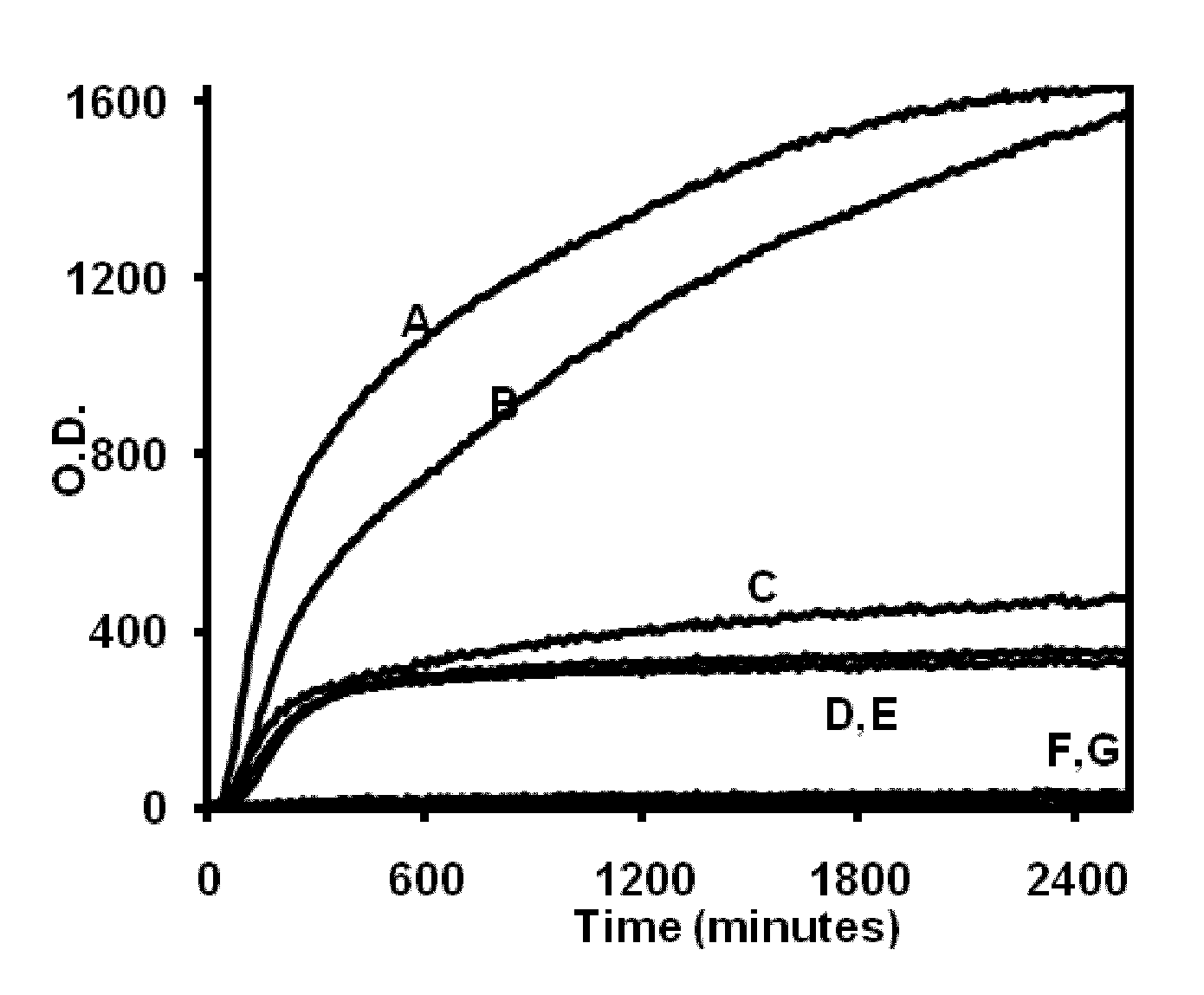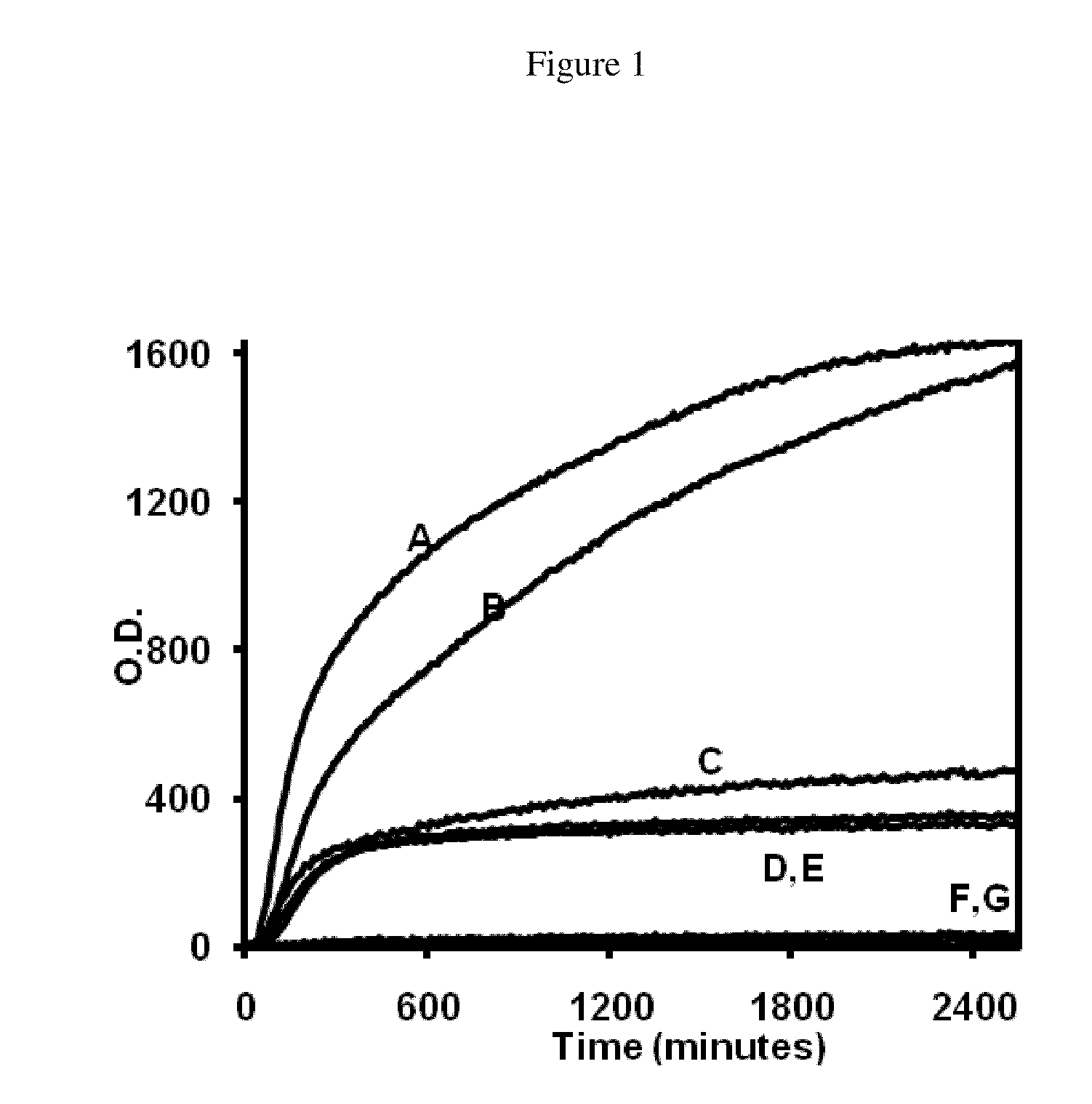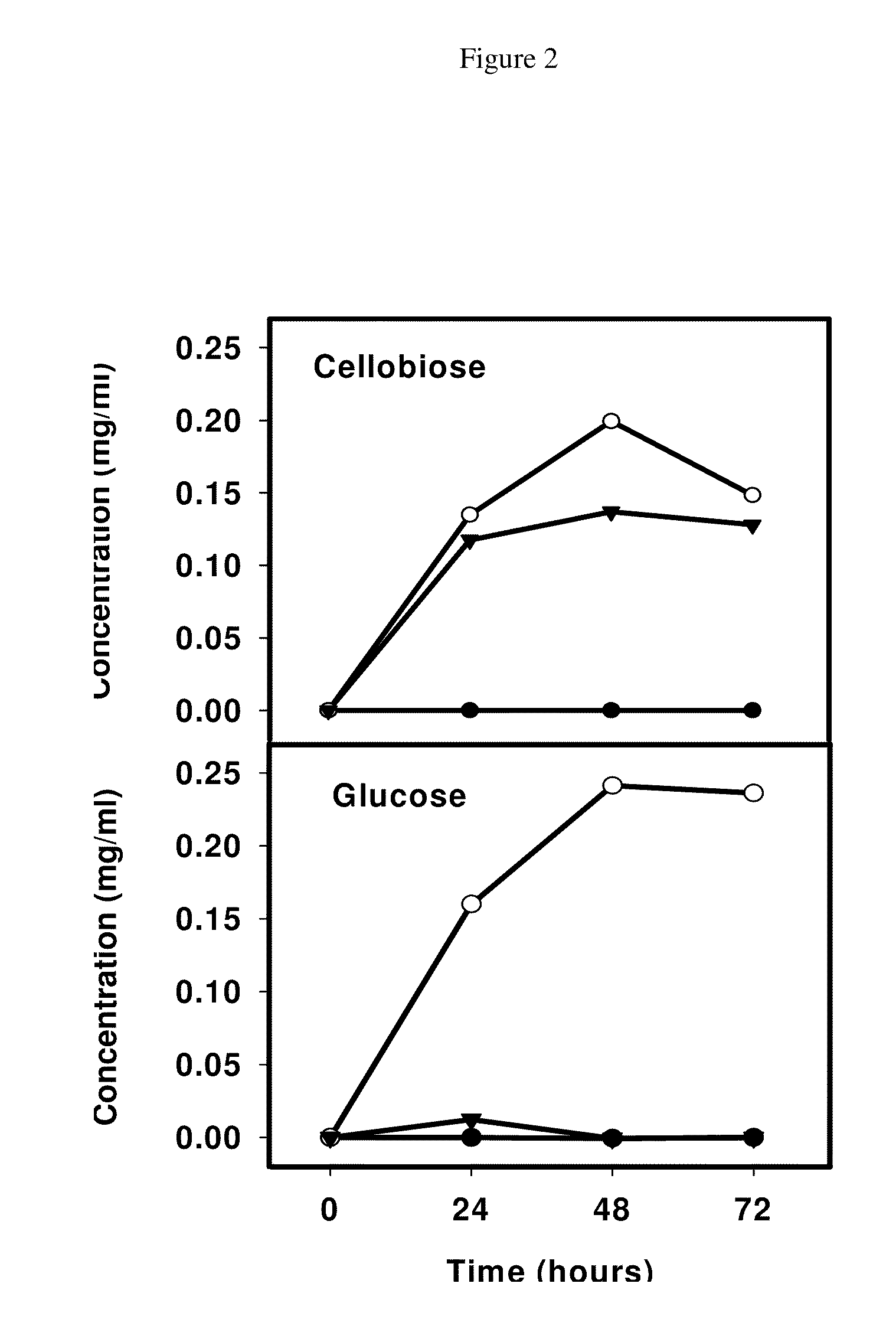Methods of saccharification of polysaccharides in plants
a technology of polysaccharides and saccharification processes, applied in the field of saccharification of polysaccharides in plants, can solve the problems of crippling the ability of the economy to function, affecting the quality of life of people, and consuming over 100 billion gallons of gasoline per year in the transportation sector alone, so as to reduce the amount of exogenously added cellulase enzymes or the composition comprising cellulase enzymes, the effect of increasing the production of fermen
- Summary
- Abstract
- Description
- Claims
- Application Information
AI Technical Summary
Benefits of technology
Problems solved by technology
Method used
Image
Examples
example 1
[0075]The following describes one method useful in measuring fermentable sugars released from cellulosic feedstock and materials, methods and procedures used in the following examples. This method uses a commercially available device, called BacT / ALERT® produced by bioMérieux (see www.biomerieux-diagnostics.com). This device provides colorimetric real time detection of CO2 released by bacteria and pH changes for early detection of microorganisms in a clinical setting. In this instance, the device is useful in monitoring CO2 released by yeast which grow on the glucose resulting from fermentable sugars produced with breakdown of cellulose over time. The process is automated and can follow the course of the reactions in real-time in a non-destructive manner allowing for intervention of the assay at any point. In addition, the BacT / ALERT® verifies that the reaction products are compatible with microbial growth.
Materials and Methods
[0076]Microbial growth: 100 mg of Fleischmann's® RapidRi...
example 2
[0080]Plants were transformed with an endocellulase encoding nucleotide sequence as is described in US Publication No. 20060026715, incorporated herein by reference. In brief, a construct was prepared with an endo-1,4-β-D-glucanase encoding nucleotide sequence (See U.S. Pat. No. 6,573,086) and a seed-preferred promoter PGNpr2 (a maize globulin-1 gene, described by Belanger, F. C. and Kriz, A. L. 1991. Molecular Basis for Allelic Polymorphism of the maize Globulin-1 gene. Genetics 129: 863-972, also found as accession number L22344 in the GenBank database), the KDEL endoplasmic reticulum retention sequence (Lys-Asp-Glu-Leu), (see Munro, S, and Pelham, H. R. B. 1987 “A C-terminal signal prevents secretion of luminal ER proteins”Cell 48:899-907), the barley alpha-amylase signal sequence, (Rogers, J. C. 1985. Two barley alpha-amylase gene families are regulated differently in aleurone cells. J. Biol. Chem. 260: 3731-3738), which was optimized, and a pin II terminator (An et al., 1989. F...
example 3
[0084]Transgenic maize expressing exocellulase was prepared as described at US Publication No. 20060026715. In brief, the CBH I gene construct was prepared, similar to the E1 construct but in this case having the BAASS sequence only, such that the enzyme is secreted to the cell wall. The starting CBH I clone was received from NREL. It is also known as cbh1-4 from Phaneorchaete chrysosporium (the genomic is shown in Gen Bank accession L22656). This gene most closely matches the CBH I gene from Trichoderma koningii at the nucleic acid level. The gene was maize optimized for the first 40 amino acids using a PCR based mutagenesis approach—this includes the 24 amino acid BAASS sequence. Codons D346 and D386 were also maize codon optimized to remove the potentially destabilizing sequences at those positions. The BAASS sequence was added to the optimized CBH I gene by PCR. The PCR product was moved to an PCR-ready cloning vector to add the pin II terminator, and then the whole unit was tra...
PUM
| Property | Measurement | Unit |
|---|---|---|
| Fraction | aaaaa | aaaaa |
| Composition | aaaaa | aaaaa |
Abstract
Description
Claims
Application Information
 Login to View More
Login to View More - R&D
- Intellectual Property
- Life Sciences
- Materials
- Tech Scout
- Unparalleled Data Quality
- Higher Quality Content
- 60% Fewer Hallucinations
Browse by: Latest US Patents, China's latest patents, Technical Efficacy Thesaurus, Application Domain, Technology Topic, Popular Technical Reports.
© 2025 PatSnap. All rights reserved.Legal|Privacy policy|Modern Slavery Act Transparency Statement|Sitemap|About US| Contact US: help@patsnap.com



